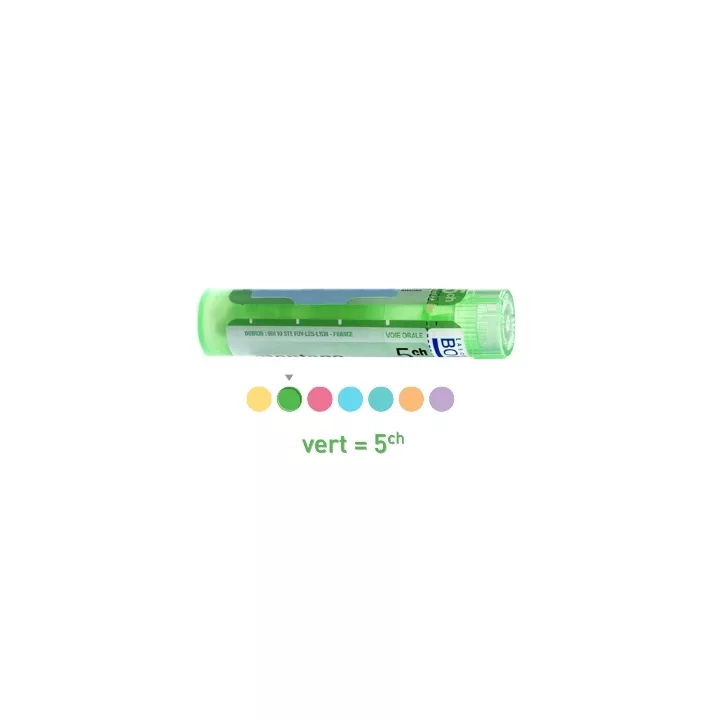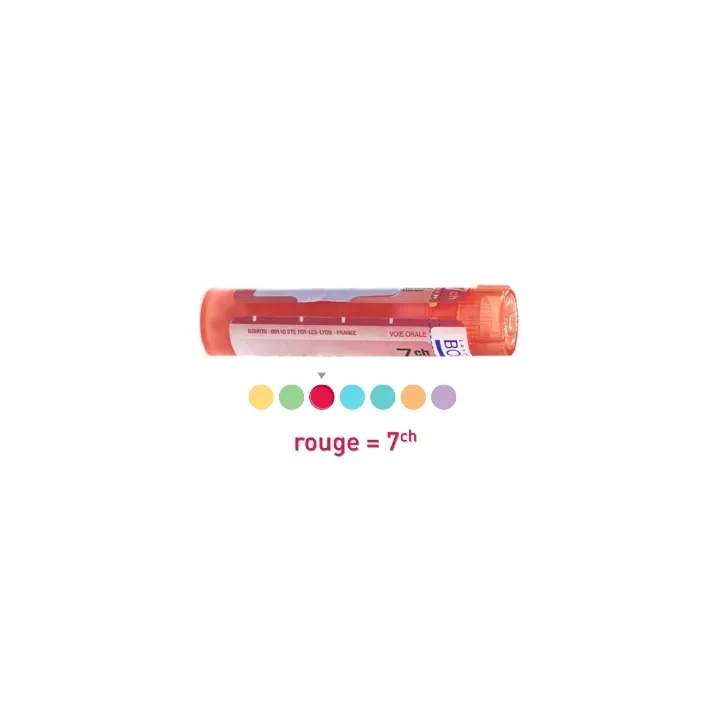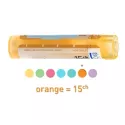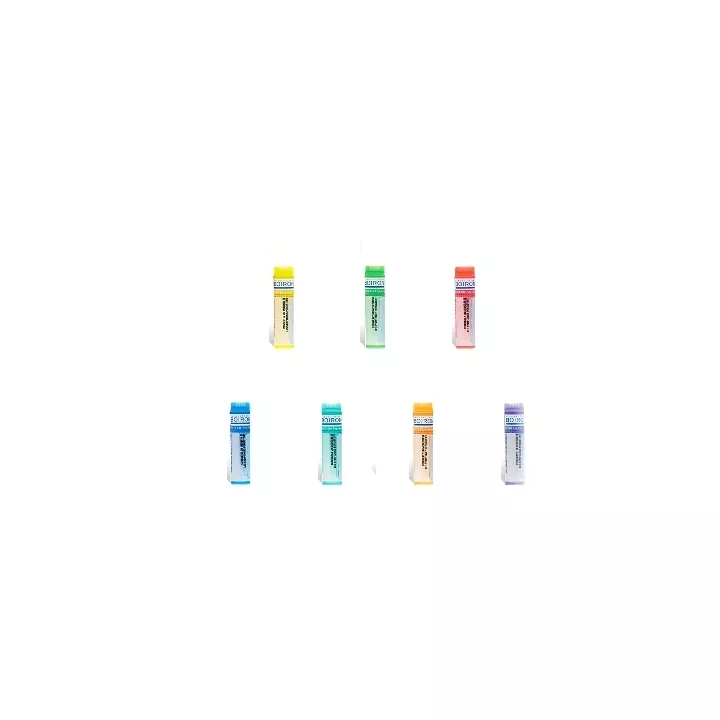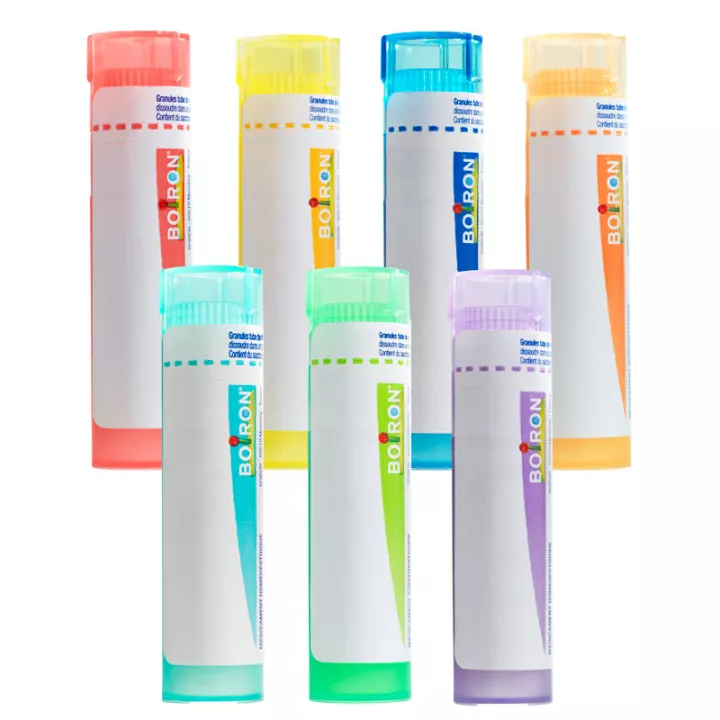Pyrogenium 4CH, 5CH, 7CH, 9CH, 12CH, 15CH, 30CH Boiron homeopathy pellets
Pyrogenium is traditionally indicated to treat acute infections such as sinusitis or dental abscesses . This remedy is also used as a basic treatment to cure chronic infections .
Pyrogenium can be used in combination with conventional treatments or with antibiotic therapy. Indeed, it acts in complementarity to treat bacterial or viral infections . this homeopathic medicine is also available in our online pharmacy in the form of a Pyrogenium Boiron single dose , at the best price.
Registered medicine: EH01968
Pyrogenium Indications and Dosage
Pyrogenium homeopathic medicines can be used in various symptoms, so it is not possible to determine the indications and dose of a specific preparation.
Origin and preparation of the homeopathic strain Pyrogenium
Pyrogenium is a homeopathic medicine derived from an animal source. Specifically, it comes from the autolysis of pork muscle tissue. In homeopathy, it is called "biotherapeutic" (formerly called "nosode").
Use and therapeutic indications of Pyrogenium
Pyrogenium is a homeopathic remedy prescribed for:
- Acute infections with a tendency to suppuration : sinusitis, otitis, bronchitis, folliculitis, abscesses, boils, eczema, wounds or infected wounds.
- Dental infections .
- Chronic infections with suppuration : otitis, sinusitis, fistulas.
- Food poisoning caused by the consumption of spoiled products.
The chalazion is a tiny tumor that can appear in subjects of any age group. Self-examination may reveal a chalazion, which is a relatively firm , inflammatory cyst on the eyelid. Unlike some eye infections, chalazion does not cause any secretion of pus. However, the subject may experience burning and stinging sensations in the eyelids. Tears for no emotional reason and intolerance of high brightness are also two symptoms of chalazion. An infection presents when palpation reveals pain and if the subject seems to have difficulty distinguishing certain objects. In some cases, the chalazion not treated in time can lead to eyelid edema and reactive conjunctivitis.
The homeopathic physician chooses the appropriate medicine, the appropriate dilution and dosage for the patient's state of health and characteristic symptoms.
Tips for using Pyrogenium and how to use it
It is recommended to take this homeopathic medicine away from meals, tobacco, coffee and mint. The granules and doses should melt under the tongue.
- For acute infections (otitis, sinusitis, abscess, etc.) : Pyrogenium 7 or 9 CH : take 5 granules morning and evening for 1 week. In the absence of a deterioration of the general condition, Pyrogenium can be prescribed in first intention. Rapid improvement should be seen within 24-48 hours. If this is not the case, consult a doctor to consider appropriate antibiotic therapy.
- For dental infections : Pyrogenium 7 or 9 CH : 5 granules morning and evening for 1 week.
- For chronic infections with suppuration : Pyrogenium 7 or 9 CH : take 5 granules per day for 2 months.
Homeopathic treatments in case of non-suppuration of chalazions:
Suppuration corresponds to a phase where the chalazion becomes an infection and leads to a discharge of pus. Homeopathic treatments can fight against the aggravation of the chalazion and promote the formation of pus to disintegrate the cyst. Thus, it is necessary to regularly take Pyrogenium diluted in 7 or 9 CH . Myristica 9 CH will be administered hourly if palpation reveals the presence of an unusual cyst on the eyelids.
Like Pyrogenium , Myristica will stimulate suppuration. If the pus has not formed and the objective is to contain the development of the chalazion, it is possible to take Hépar Sulfur in 15 Ch at the rate of a single dose if the suppuration has not started.
Advice from your pharmacist to optimize the effectiveness of Pyrogenium
- For acute infections : systematically take 5 granules of Hepar sulfuris calcareum 15 to 30 CH , 1 to 2 hours after each dose of Pyrogenium.
- For dental infections : take 5 granules of Mercurius solubilis 9 or 15 CH , 1 to 2 hours after each dose of Pyrogenium.
- For chronic infections with suppuration : combine Pyrogenium withSilicea 15 CH , 5 granules per day.
It is advisable not to touch the homeopathic granules with your fingers.
Use toothpaste without mint (such as Homéodent Boiron, toothpaste compatible with taking homeopathic granules).
Pyrogenium packaging and content
Translucent granule tube (allows you to view the remaining granules).
Each tube color corresponds to a dilution
yellow 4CH green 5CH red 7CH blue 9 CH water green 12CH orange 15CH purple 30CH
Weight 4g. About 80 pellets.
Pyrogenium is a homeopathic remedy prepared with the lysate of muscle tissue from pork or beef.
Precaution of use
Caution
Granules and globule doses contain sucrose and lactose. Oral powdered triturations contain only lactose. The mother tinctures (TM), drinkable drops and ampoules are hydro-alcoholic solutions.
Giving Pyrogenium homeopathic pellets to babies and children
For Pyrogenium granules dissolve them in 100ml of water. The granules being very long to dissolve, it is necessary to prepare your mixture in advance.
Homeopathy Pyrogenium and pregnancy
Pyrogenium homeopathic medicines have no chemical toxicity, contraindications, interactions with other medicines, or adverse effects related to the amount of product ingested. Pregnant women can treat themselves without known risk for them and their future child, but it is preferable to seek advice.
Frequency of use of homeopathy
In acute conditions, it is advisable to take Pyrogenium homeopathic remedies every hour until symptoms improve. Therefore, it is necessary to space out the doses, 3 or 4 times a day, then to stop gradually.
In chronic conditions, remedies in low dilution (> 9CH) are taken 1 to 2 times a day, basic remedies are taken once a week, or even once a month. This decision is up to the homeopath.
What to do if there is no improvement within 24 hours
Certain pathologies cannot be treated in homeopathy by simple Pyrogenium self-medication. Their seriousness requires medical advice that can be issued by a homeopathic doctor. This doctor will judge whether your condition can be cured by homeopathy alone or whether your treatment must be supplemented by allopathy.




